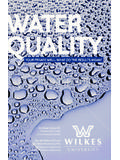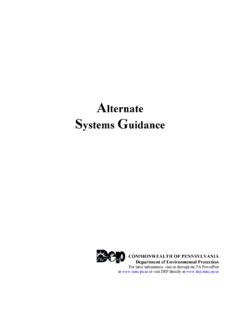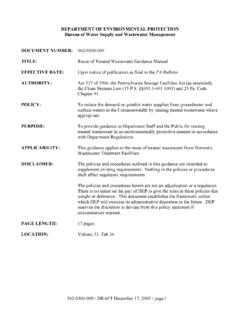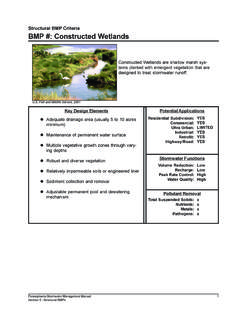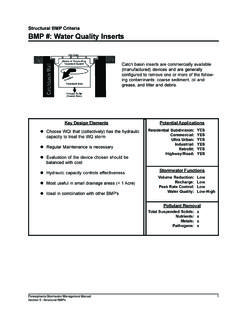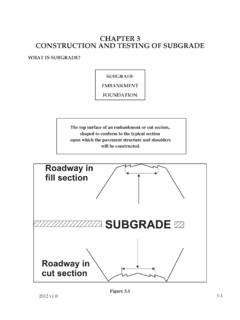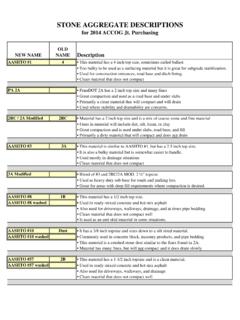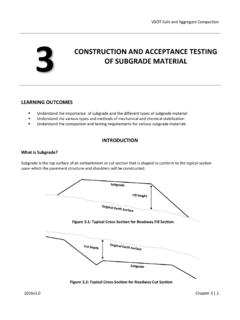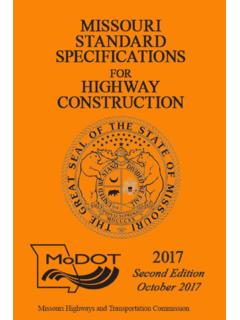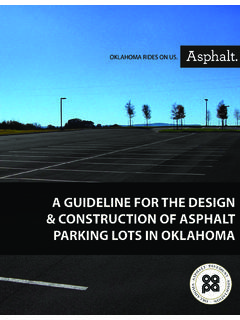Transcription of BMP #: Dry Wells / French Drains - B.F. Environmental
1 Structural BMP Criteria BMP #: Dry Wells / French Drains A Dry well , or French Drain, is a variation on an Infiltration Trench that is designed to temporarily stores and infiltrate rooftop runoff. Key Design Elements Potential Applications ! Maintain minimum distance from building founda- Residential Subdivision: YES. tion (typically 10 feet) Commercial: YES. Ultra Urban: YES. Industrial: LIMITED. ! Provide adequate overflow outlet for large storms Retrofit: YES. Highway/Road: NO. ! Size to retain and infiltrate the difference in runoff volume for the 2-year storm, pre- to post- develop- ment Stormwater Functions ! Depth of Dry well aggregate should be between Volume Reduction: Medium 18 and 48 inches deep Recharge: Medium Peak Rate Control: Medium Water Quality: Medium !
2 At least one observation well ; clean out is recom- mended Pollutant Removal ! Wrap aggregate with non-woven geotextile Total Suspended Solids: x Nutrients: x ! Maximum drain-down time is 48 hours Metals: x Pathogens: x ! Provide pre-treatment for some situations Other Considerations: Infiltration criteria and required testing applies Pennsylvania Stormwater Management Manual 1. Section 5 - Structural BMPs Description A Dry well , sometimes called a French Drain, is a subsurface storage facility that temporarily stores and infiltrates stormwater runoff from the roofs of structures. Roof leaders connect directly into the Dry well , which may be either an excavated pit filled with uniformly graded aggregate wrapped in geotextile or a pre-fabricated storage chamber.
3 Dry Wells discharge the stored runoff via infiltration into the surrounding soils. In the event that the Dry well is overwhelmed in an intense storm event, an overflow mechanism (surcharge pipe, connection to larger infiltration area, etc.) will ensure that additional runoff is safely and efficiently conveyed downstream. By treating runoff at the source, Dry Wells can dramatically reduce the increased volume of stormwater generated by the roofs of structures. Though roofs are generally not a significant source of runoff pollution, they are still one of the most important sources of new or increased runoff volume from developed areas. By decreasing the volume of stormwater runoff, Dry Wells can also reduce runoff rate and improve water quality.
4 As with other infiltration practices though, Dry Wells are not appropriate for hot spots or other areas where high pollutant or sediment loading is expected. Furthermore, Dry Wells are not recommended within a specified distance to structures (for fear of basement seepage or flooding) or where they might interfere with the opera- tion of subsurface sewage disposal systems. Figure 1. Roof Leader / Dry well Schematic (Ontario Manual). Variations Intermediate Sump Box Water can flow through an intermediate box with an outflow higher to allow the sediments to settle out. Water would then flow through a mesh screen and into the infiltration trench.
5 Drain Without Gutters For structures without gutters or downspouts, runoff is designed to sheetflow off a pitched roof surface and onto a stabilized ground cover (surface aggregate, con- crete, or other means). Runoff is then directed toward a Dry well via stormwater pipes or swales. 2 Pennsylvania Stormwater Management Manual Section 5 - Structural BMPs Figure 2. Intermediate Sump Box (New York Manual). Pre-fabricated Dry well There are a variety of pre-fabricated, predominantly plastic subsurface storage chambers on the market today that can replace aggregate Dry Wells . Since these sys- tems have significantly greater storage capacity than aggregate, space requirements are reduced and associated costs may be defrayed.
6 Provided the following design guidelines are followed and infiltration is still encouraged, pre-fabricated chambers can prove just as effective as standard aggregate Dry Wells . Figure 3. Example of pre-fabricated chamber (Infiltrator Systems, Inc.). Applications Any roof or impervious area with relatively low sediment loading Design Considerations 1. Dry Wells are sized to temporarily retain and infiltrate stormwater runoff from roofs of structures, but if possible, Dry Wells should be designed to accommodate increased runoff volumes for up to the 2-year storm. Pennsylvania Stormwater Management Manual 3. Section 5 - Structural BMPs 2. Dry Wells should drain-down within 48 hours.
7 Longer drain-down times reduce Dry well efficiency and can lead to anaerobic conditions, odor, and water quality problems. 3. Dry Wells typically consist of 18 to 48 inches of clean washed, uniformly graded aggregate with 40% void capacity (AASHTO No. 3, or similar). Dry well aggregate is wrapped in a non-woven geotextile, which provides separation between the aggregate and the surround- ing soil. At least 12 inches of soil is then placed over the Dry well . An alternative form of Dry well is a subsurface, pre-fabricated chamber. A variety of pre-fabricated Dry Wells are currently available on the market. 4. Dry Wells are not recommended when their installation would create a significant risk for basement seepage or flooding.
8 In general, 10 feet of separation is recommended between Dry Wells and building foundations. However, this distance may be shortened at the discretion of a geotechnical or structural engineer. Shorter separation distances may warrant an impermeable liner to be installed on the building side of the Dry well . 5. Continuously perforated pipe(s) can be installed along the length of an aggregate Dry well to evenly distribute runoff, promoting more widespread infiltration. 6. All Dry Wells must be able to convey system overflows to downstream drainage systems. System overflows can be incorporated either as surcharge (or overflow) pipes extending from roof leaders or via connections to more substantial infiltration areas.
9 In the case of the latter, the Dry well bottom should have the minimally sufficient slope needed to direct runoff towards the infiltration bed area. (In general, the minimum slope of a Dry well bottom should be per foot.). 7. The design depth of a Dry well should take into account frost depth to prevent frost heave. 8. Though it may vary according to design, the maximum drainage area to a Dry well is typically on the order of 1 acre; most roof top areas are substantially smaller. 9. A removable filter with a screened bottom should be installed in the roof leader below the surcharge pipe in order to screen out leaves and other debris. the water level in a Dry well is the primary means of measuring infiltration rates and drain-down times, adequate inspection and maintenance access to the well should be provided.
10 Observation Wells not only provide the necessary access to the well , but they also provide a conduit through which pumping of stored runoff can be accomplished in a failed system. roofs are generally not a significant source of runoff pollution, they can still be a source of particulates and organic matter, as well as sediment and debris during construc- tion. Measures such as roof gutter guards, roof leader clean-out with sump, or an interme- diate sump box can provide pretreatment for Dry Wells by minimizing the amount of sedi- ment and other particulates that may enter it. 4 Pennsylvania Stormwater Management Manual Section 5 - Structural BMPs Detailed Stormwater Functions Volume Reduction Calculations: The storage volume of a Dry well is defined as the volume beneath the discharge invert.
